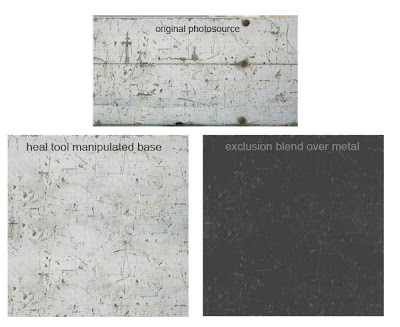I sometimes like to make texture bases which I store and keep. It involves taking a cool feature from a problematic photo and generally repeating it everywhere to give you a layer that you can easily adjust and overlay your textures. In the example it is finally overlayed a flat gray with exclusion at 65%, this is just so you can easily see it but in this case I'd drop it down to something like 15-30% as its a very busy texture.



2 comments:
Good idea. How do you organise your own special texture sheets so you can quickly find them again?
I usually place them in one PSD that has different groups. Wood, Metal , dirt, scratches etc
Post a Comment